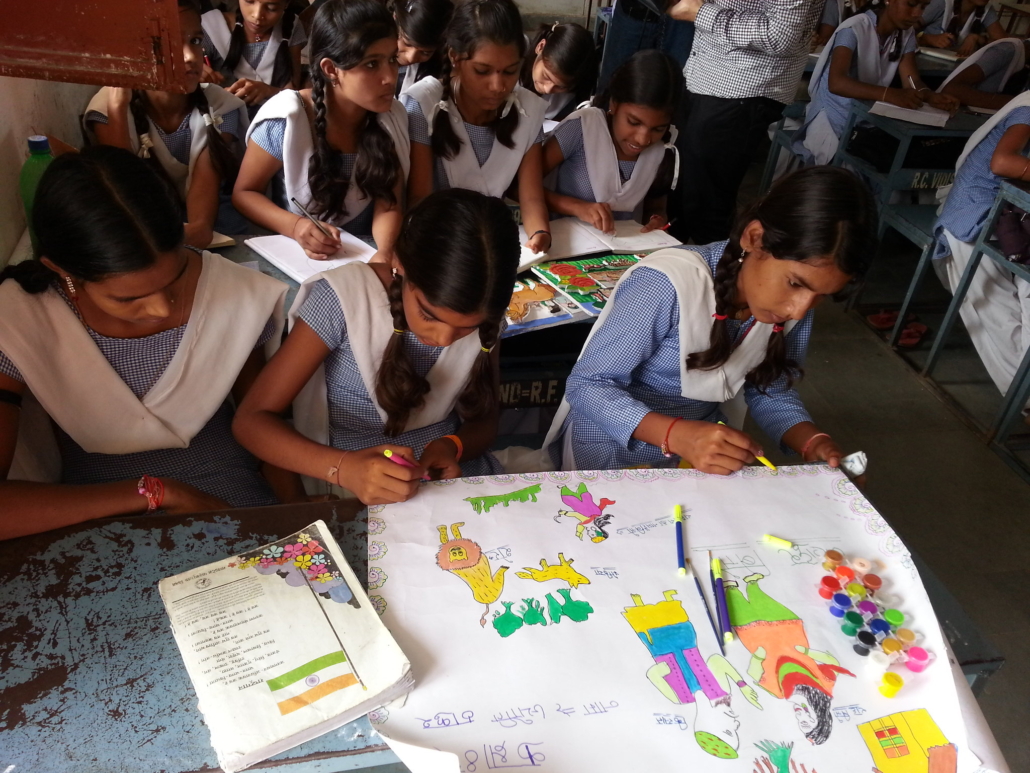Informal Education in India

India has 28.7 million illiterate adults, the most in the world. According to the U.N. Population Division, approximately 50.3% of India’s population is under 25 years old, accounting for more than 40%of India’s population. Meanwhile, literacy rates improved to 77.7% in 2020. The lack of literacy could hinder the country’s prospects. The demand for education has increased, but as noted by Karthik Muralidharan, an assistant professor at the University of California, India’s problem relates more to the lack of supply than the lack of demand.
The lack of supply can result from several factors, including inadequate funding for public schools, a shortage of qualified teachers, insufficient infrastructure and a lack of accountability and transparency in the education system. The rising demand, faced with the shortcomings of state education, has created a market for low-budget private schools, for-profit enterprises and small entrepreneurs to charge small sums to poor parents.
Low-Budget Private Schools
James Tooley, a professor who people know for his work on low-cost private education in India, has pointed out that the government has been underestimating the number of low-cost private schools in the country, as many are not formally registered. His recent research has led him to find 1,224 private schools in the city of Patna, where the government had listed only 40.
The low-budget private slum schools, which legislation requires to operate as charities, have not been part of government schemes to help maintain small businesses afloat during the pandemic. Consequently, many of the schools closed down after the COVID-19 pandemic.
In the absence of more formal education, there appears to be a need for the emergence of solutions to maintain and expand private schools in slum areas. For instance, in Mumbai, the Doorstep School, a mobile classroom, found an innovative way to reward its most hardworking students by naming streets after them. These lanes, which are often not found on maps, become well-known, particularly among slum dwellers, providing students with a sense of pride and much-needed encouragement.
Solutions to Help Slum Education Initiative Survive and Strive
Owners of private schools in slums have very low chances of obtaining government loans. One way to support these schools could be to provide small loans to individual private schools to facilitate the upgrade of the facilities required for pupils to learn effectively, both in terms of study and sanitation. Investments could also help the schools improve teacher training programs, ensuring meeting and hearing to required standards.
Partnering with local NGOs such as the School-in-a-Box Project, the Ashraya Initiative for Children, the Barefoot College, the Balwadi School and the Snehalaya Shelter along with many others, do remarkable work in adapting to the needs of each community. These organizations provide education at various levels, and this is alongside health care and other essential services for children and women living in impoverished neighborhoods and slums across various Indian cities.
Improving Education
Education in Indian slums is a domestic issue with global implications. India, the world’s second-most populous country, has a significant portion of its population living in slums. The current generation of young people needs better education to acquire the skills and knowledge required to succeed in an increasingly competitive global economy. This could potentially have ripple effects on the global economy, workforce, as well as international development and poverty reduction efforts.
Apart from benefitting India, improving education in Indian slums could also benefit the United States (U.S.). Increased economic growth in India could create new opportunities for investment and trade, potentially benefiting both countries.
What is Next?
Education is not a luxury but a fundamental human right. Improving access to education for underprivileged communities is crucial for achieving the U.N. Sustainable Development Goals (SDGs). The SDGs are a set of 17 goals adopted by the U.N. to end poverty, protect the planet and ensure peace and prosperity for all. SDG4 aims to ensure the provision of inclusive and equitable quality education for all.
– Hanna Bernard
Photo: Flickr
